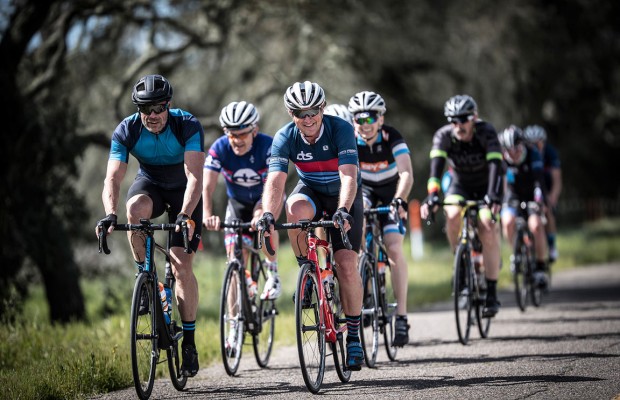Why forks often break on road bikes and what is the solution?
One of the most horrifying breakdowns that can happen on a road bike is a broken fork, something unusual but which, if it occurs while riding, can be the cause of a serious accident. However, when it happens, it is not usually a material failure but is related to the maintenance we do on our bike. We tell you what are the most typical causes and how to avoid it.

How to avoid one of the most serious breakdowns that we can suffer on our bike
Those of you who have been following road cycling for a few years will surely remember Paris-Roubaix in 2006 when Discovery Channel rider George Hincapie, one of the favourites in that edition of the northern inferno, broke his collarbone when his fork tube unexpectedly broke while crossing a stretch of pavé.
It's not something that happens every day, but when it does, it had better not be while speeding down a mountain pass as there is little or no chance of saving yourself from a very serious crash as happened to the American rider.
RECOMENDADO

Black Friday Garmin 2025: the ultimate guide to choosing your GPS at the best price

How to wash your cycling clothes? 10 keys to make them always look new

Cycling can help you fight the effects of the time switch

Easy to apply tips for riding faster

The real importance of signing up for a race

The best road bikes of 2025
Fortunately, the materials from which the bikes are made and the construction methods have evolved dramatically since then and, although all the components are refined to the maximum, leaving only the essential material, the reliability is also enormous. You only have to visit the factory of any brand in the sector to see at first hand the rigorous resistance tests to which the bikes are subjected and the meticulous quality control that is carried out to guarantee the reliability of the product.
But no matter how hard you try to reduce the odds, everything is susceptible to breakage and the fork of the bike is undoubtedly one of the most critical elements. In fact, brands such as Merida, BMC and Specialized have been forced in the past to recall some of their models in order to revise or replace the forks after detecting breakages or problems that could lead to them. Fortunately, this type of product failure is minimal and is usually detected by the brands before an accident occurs.
What causes a fork to break
Often, the origin of a fork breakage is to be found in the human factor and is usually due to incorrect maintenance.
As we said before, the different parts that compose today's bikes are being developed by squeezing the designs in order to eliminate material where it is not strictly necessary. This means that the thickness of the carbon fibre in certain areas is minimal. Besides, carbon fibre is a material with a clear directional behaviour, that is to say, it shows great resistance in the direction of the forces for which that particular part has been designed, but it is tremendously fragile when it comes to dealing with other types of stresses not contemplated.

If we transfer this to the fork of the bike, we see that the number one reason for breakage is found in the fork tube in the area where the stem is attached to it. A problem that is usually caused by excessive tightening that ends up cutting the fibres, weakening an area that directly supports the weight of the cyclist and in constant flexion due to the vibrations of the terrain.
The head area around the lower bearing of the steerer is another delicate place, especially in current forks in which the lower track that guides the bearing is the carbon of the fork itself. An area that does not cause problems when everything is well adjusted, but if some kind of slack appears, it means that the support is no longer correct and the stresses can be located outside the areas intended for it, generating areas of tension that could lead to breakage.
Of course, we cannot forget the effects of a crash. In this case, a breakage is usually more catastrophic and obvious. But sometimes the impact does not cause any visible problems at first glance, but it can cause bending that can lead to small cracks in the carbon weave, which can eventually lead to fork breakage.
How to prevent fork breakage
You will have guessed that when it comes to manipulating such a critical part of the bike as the fork, you have to be very clear about what you are doing, especially with the current models of bike which, with their internal wiring, make any mechanical operation in this area of the bike very complicated.
The first point to check is the lower bearing. This is the area of the fork that receives the most stresses and therefore, it is essential that the bearing is well seated in the track made in the carbon, without inclinations or looseness. Of course, the area must be lubricated with specific grease for use with carbon fibre to avoid any unwanted friction that could wear the material. We will also check that the bearing rotates smoothly, with no hard spots.

The next step to consider is the adjustment. Since the popularisation of Ahead steerersets about 20 years ago, as opposed to the traditional nut and locknut threaded to the fork neck, the system of fixing the steerer has barely changed.
A bolt at the top compresses the fork, steerer and stem assembly to just the right point where the steerer turns smoothly, with no hard spots or slack. Once this precise fit is achieved, clamp-like bolts secure the stem around the steerer tube. Over-tightening this stem clamp can lead to crushing of the carbon fibres in the tube. To avoid this, it is essential to tighten the stem clamp to the manufacturer's specifications, which requires the use of a dynamometer spanner.

It is also essential at this point that the fork is cut to the correct height. If it is too high, there will not be enough surface area of the stem in contact with the fork to provide reliable clamping. It is also important that the expander that sits inside the steerer tube and provides the anchor point needed to press the steerer assembly is solidly fixed and long enough to span the width of the stem clamp. Having this part inside the fork tube reinforces it against the clamp's compression forces and prevents it from being crushed.
Finally, it is advisable to check the steering fork assembly from time to time. First, to check that no looseness has appeared, which is evident if, when stationary, we lock the front brake and try to move the wheel front and rear. Secondly, to check that there are no cracks in the carbon or damaged areas. If in doubt, it is best to consult a specialist mechanic or even the brand to determine whether it is necessary to replace the fork.
What if the fork needs to be replaced?
If we detect a serious problem that forces us to change the fork, it is something we must not neglect. Let's not forget that it is a vital element in our safety.
If we have to opt for a new fork, the first option is to go to the bike brand itself to try to get the specific model that corresponds to our bike. Far from what used to happen with traditional bikes, nowadays the frame and fork of almost any road bike form an integrated and inseparable unit.

However, we may find ourselves in the case that our model is discontinued and there are no more spare parts available, so we will have no choice but to resort to a generic model. In this case, the first thing to do is to trust in a fork from a reputable manufacturer that guarantees good bearing seats and the quality of construction of an element that, once again, is critical in terms of cyclist safety.
It is extremely important to choose a fork with similar characteristics to the one we had. This means that you should not change the height of the fork or the caster, which largely determines the geometry of the steering and therefore the behaviour of the bike.
Once we have a new fork, the next critical point is to cut it. It is essential to measure twice, three times or as many times as necessary before proceeding to cut to the desired height and, when cutting, use a quality saw and a guide that allows us to make a straight and clean cut, without producing delamination in the carbon of the tube.